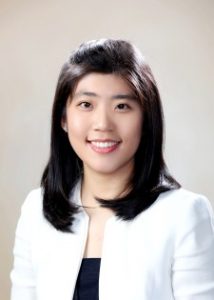
Update/New website: https://sites.google.com/view/joohyunggraceshin/
The long-run decline in the aggregate job separation rate in the United States has been documented in the literature. This paper proposes that the increase in occupation-specific training, which results in human capital becoming less transferable across occupations, explains the falling aggregate job separation rate. I do a shift-share decomposition of the decline in the aggregate job separation rate to find that it is accounted for mostly by the within-occupation increase in required occupation-specific training. Then I build a search-and-matching model where the increase in occupation-specific training within occupations reduces job separations. The model predicts 60% of the decline in the aggregate job separation rate. When occupations become more specific, human capital acquired from one occupation becomes less transferable to another, resulting in larger wage cuts for occupation switchers. Occupation switchers must also undergo a longer period of occupation-specific training in their new occupation, during which they earn low wages. In the model, after occupations become more specific, workers separate less to avoid switching occupations, accepting lower wages at their current job at the same level of productivity.
Work in Progress
Occupation Specificity, Endogenous Occupation Switching, and Unemployment Duration
Abstract:
It is documented in the literature that the average unemployment duration has increased in the United States. This paper studies how the increase in occupation-specific training results in longer unemployment spells. I do a shift-share decomposition to find that the observed increase in the average unemployment duration is driven by the within-occupation increase in required occupation-specific training. Then I build a search-and-matching model where the increase in occupation-specific training within occupations lengthens unemployment duration. The model predicts all of the increase in the average unemployment duration. In the model, the longer unemployment spells come from the unemployed workers who are trained in their previous occupation. They become less motivated to switch occupations because their human capital has become more specific to their previous occupation. If they switch occupations, they could quickly end their unemployment spell. This would, however, come at the cost of larger wage cuts because their human capital has become less transferable to other occupations. Occupation switchers would also have to earn these lower wages for a longer time until they become trained in their new occupation. Hence, despite a low probability of becoming employed in the same occupation as before, previously trained workers increasingly choose to not switch occupations. This results in longer average unemployment duration.
Publications
“A Simple Correction of Gini Estimates Using Tax Return Data” (with So-Hye Yoon and Tae-Hwan Kim), The Review of Social & Economic Studies, 2020, Vol. 63, No. 1, pp.1-38. (in Korean)
“Top Income Shares Based on Household Income and Expenditure Survey Data” (with Yunmi Kim and Tae-Hwan Kim), The Korean Journal of Economics, 2015, Vol. 22, No. 1, pp. 87-97. (in Korean)
Teaching Assistantships
- (Master’s Level) International Economics (Spring 2019)
- (Master’s Level) Macroeconomic Analysis II (Spring 2018)
- Financial Economics (Fall 2019)
- Money and Banking (Fall 2017, Spring 2020)
- Intermediate Macroeconomics (Fall 2016, Spring 2017, Fall 2018)

